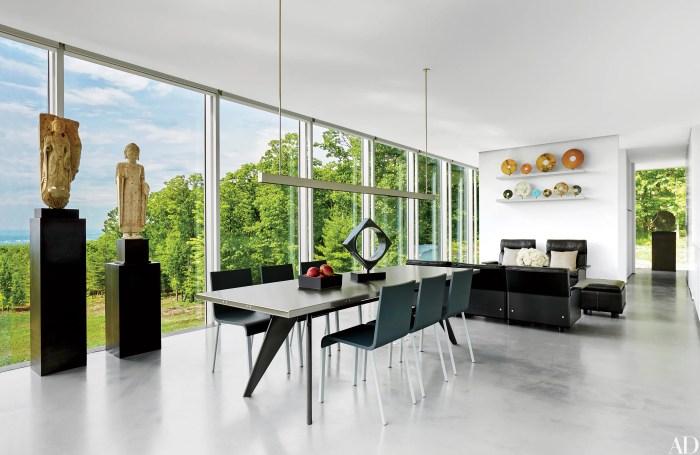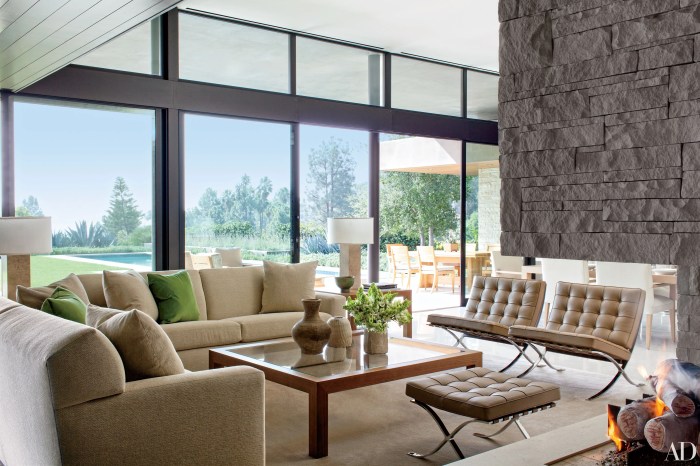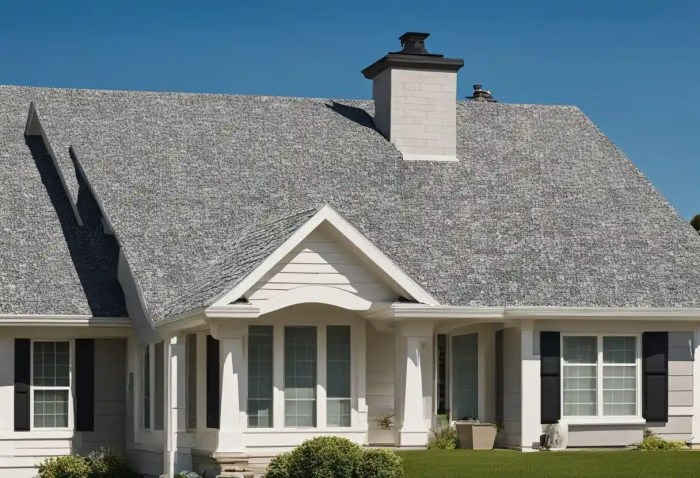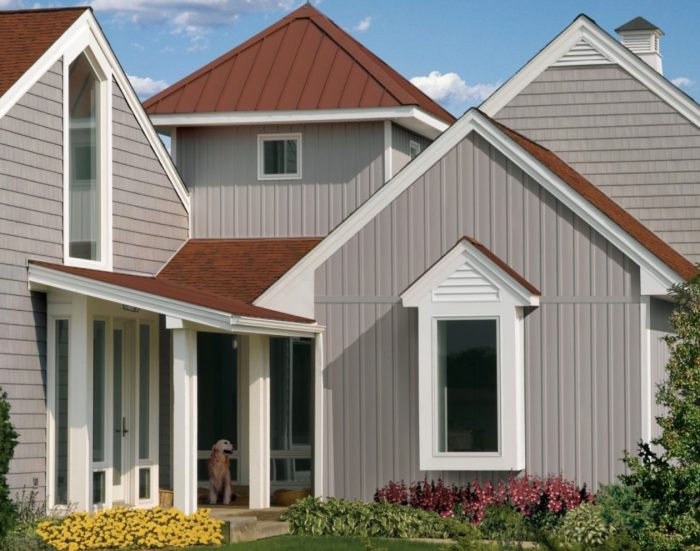Crafting Spaces: Exploring Architectural Interior Design
As architectural interior design takes center stage, this opening passage beckons readers into a world crafted with good knowledge, ensuring a reading experience that is both absorbing and distinctly original. From the intricate play of lighting to the choice of materials, architectural interior design offers a unique perspective on shaping spaces that captivate the senses and inspire creativity.
Overview of Architectural Interior Design

Architectural interior design focuses on the interior spaces of buildings, incorporating both aesthetics and functionality to create harmonious environments. It goes beyond simply decorating a space to encompass the structural elements that define the overall design.
Key Elements of Architectural Interior Design
Architectural interior design differs from regular interior design by considering the layout, materials, and structural elements of a space. Key elements include:
- Space Planning: Strategic placement of furniture, fixtures, and architectural elements to optimize functionality.
- Materials Selection: Choosing materials that not only look good but also complement the overall design and serve practical purposes.
- Lighting Design: Utilizing natural and artificial light to enhance the ambiance and functionality of a space.
- Structural Details: Incorporating architectural elements such as columns, beams, and arches into the interior design.
Importance of Architectural Interior Design
Architectural interior design plays a crucial role in shaping spaces by creating environments that are both visually appealing and functional. It influences how people interact with a space and can evoke specific emotions or responses. A well-designed interior can enhance productivity, creativity, and overall well-being.
Examples of Famous Architectural Interior Design Projects
Some famous architectural interior design projects include:
- The Guggenheim Museum in New York City, designed by Frank Lloyd Wright, known for its iconic spiral ramp and natural light design.
- The Louvre Pyramid in Paris, designed by I.M. Pei, which serves as the main entrance to the Louvre Museum, combining modern architecture with the historic surroundings.
- The Burj Al Arab in Dubai, known for its luxurious and innovative interior design, creating a unique and upscale experience for guests.
Elements of Architectural Interior Design
Interior design is a multifaceted discipline that involves various elements to create functional and aesthetically pleasing spaces. When it comes to architectural interior design, several key elements play a crucial role in shaping the overall look and feel of a space.
Lighting
Lighting is a fundamental element in architectural interior design as it can greatly impact the mood and atmosphere of a space. Natural light, artificial lighting fixtures, and their placement all contribute to the functionality and visual appeal of a room.
Proper lighting can highlight architectural features, create focal points, and enhance the overall design aesthetic.
Materials
The choice of materials used in architectural interior design can significantly influence the look and feel of a space. From flooring and wall finishes to furniture and decor, materials play a vital role in defining the style and ambiance of a room.
Different textures, colors, and patterns can add depth and character to a space, while also impacting its functionality and durability.
Spatial Planning
Spatial planning involves the layout and organization of a space to optimize functionality and flow. Architectural elements such as walls, doors, windows, and partitions are strategically positioned to create distinct areas for various activities while ensuring a seamless transition between different zones.
Effective spatial planning can maximize the use of space and improve the overall usability of a room.
Comparing and Contrasting Architectural Features
Architectural features such as arches, columns, beams, and moldings can be used to enhance the design of a space. While some features may be purely decorative, others serve structural purposes. By comparing and contrasting different architectural elements, designers can create a harmonious balance between form and function, adding visual interest and character to a room.
Incorporating Architectural Elements
When incorporating architectural elements into interior design projects, it is essential to consider the overall design concept, the existing architectural style of the space, and the desired aesthetic outcome
Materials and Finishes in Architectural Interior Design
Materials and finishes play a crucial role in architectural interior design, as they greatly influence the overall look and feel of a space. The choice of materials can determine the aesthetic appeal, functionality, and durability of an interior design project.
Role of Materials and Finishes
Materials such as wood, metal, glass, stone, and fabrics can create different aesthetics in interior spaces. For example, using wood can add warmth and a sense of coziness, while metal can bring a modern and industrial feel to a room.
The finishes applied to these materials, such as glossy, matte, or textured finishes, further enhance the visual impact of the design.
Examples of Innovative Use of Materials
- Concrete: Incorporating exposed concrete walls or floors can add an urban and contemporary edge to a space.
- Recycled materials: Using recycled materials like reclaimed wood or metal can add a sustainable and eco-friendly element to the design.
- Living materials: Introducing living materials such as plants or green walls can bring a biophilic design element into the interior space, promoting well-being and a connection to nature.
Choosing the Right Materials and Finishes
When selecting materials and finishes for a design project, it is important to consider factors such as the function of the space, the desired aesthetic, maintenance requirements, and budget constraints. Conducting research on the durability and performance of materials, as well as seeking input from clients and industry professionals, can help in making informed decisions.
Technology and Innovation in Architectural Interior Design

Technology has significantly impacted the field of architectural interior design, revolutionizing the way spaces are conceptualized, designed, and experienced. From advanced visualization tools to smart home technology, the integration of technology has opened up new possibilities and enhanced the functionality and aesthetics of interior spaces.
Impact of Technology on Architectural Interior Design
Technology has revolutionized the design process, allowing designers to create more complex and intricate designs with precision and accuracy. Advanced software tools enable designers to visualize spaces in 3D, making it easier to communicate design ideas to clients and collaborators.
Virtual reality (VR) and augmented reality (AR) have also become valuable tools for experiencing and refining interior design concepts before construction begins.
Use of Smart Home Technology
Smart home technology has become increasingly popular in modern interior design projects, offering homeowners convenience, comfort, and energy efficiency. From smart lighting systems and automated shades to integrated audiovisual systems and climate control, these technologies enhance the functionality of interior spaces while also adding a touch of luxury and sophistication.
Innovative Integration of Technology
Designers are constantly exploring innovative ways to integrate technology into architectural interior design. This includes the use of interactive displays, kinetic installations, and responsive surfaces that adapt to user behavior and preferences. The integration of biophilic design principles with technology, such as living walls with automated irrigation systems, blurs the boundaries between nature and technology in interior spaces.
Staying Updated with Technological Advancements
To stay current with technological advancements in architectural interior design, designers must actively engage with industry conferences, workshops, and online resources. Continuous learning and experimentation with new technologies are essential to remain competitive in the field and deliver cutting-edge design solutions to clients.
Collaboration with technology experts and staying informed about emerging trends and innovations are key to staying ahead in the ever-evolving landscape of architectural interior design.
Last Recap
In conclusion, architectural interior design is a dynamic field that merges functionality with aesthetics to create spaces that leave a lasting impression. By delving into the essential elements and innovative approaches of this design discipline, one can truly appreciate the artistry behind every architectural interior project.
FAQs
How does architectural interior design differ from regular interior design?
Architectural interior design focuses on integrating structural elements like lighting, materials, and spatial planning into the overall design, creating a cohesive and harmonious space. Regular interior design typically deals with decorative aspects and furnishings.
What are some famous architectural interior design projects?
Some famous projects include the Guggenheim Museum in Bilbao, Spain designed by Frank Gehry and the Fallingwater House in Pennsylvania by Frank Lloyd Wright.
How do materials and finishes play a role in architectural interior design?
Materials and finishes contribute to the overall aesthetics of a space. They can evoke different moods and styles, enhancing the design concept and adding depth to the architectural elements.
What impact has technology had on architectural interior design?
Technology has revolutionized the way architectural interior design is approached, offering new tools for visualization, sustainable practices, and integration of smart home systems for enhanced living experiences.




